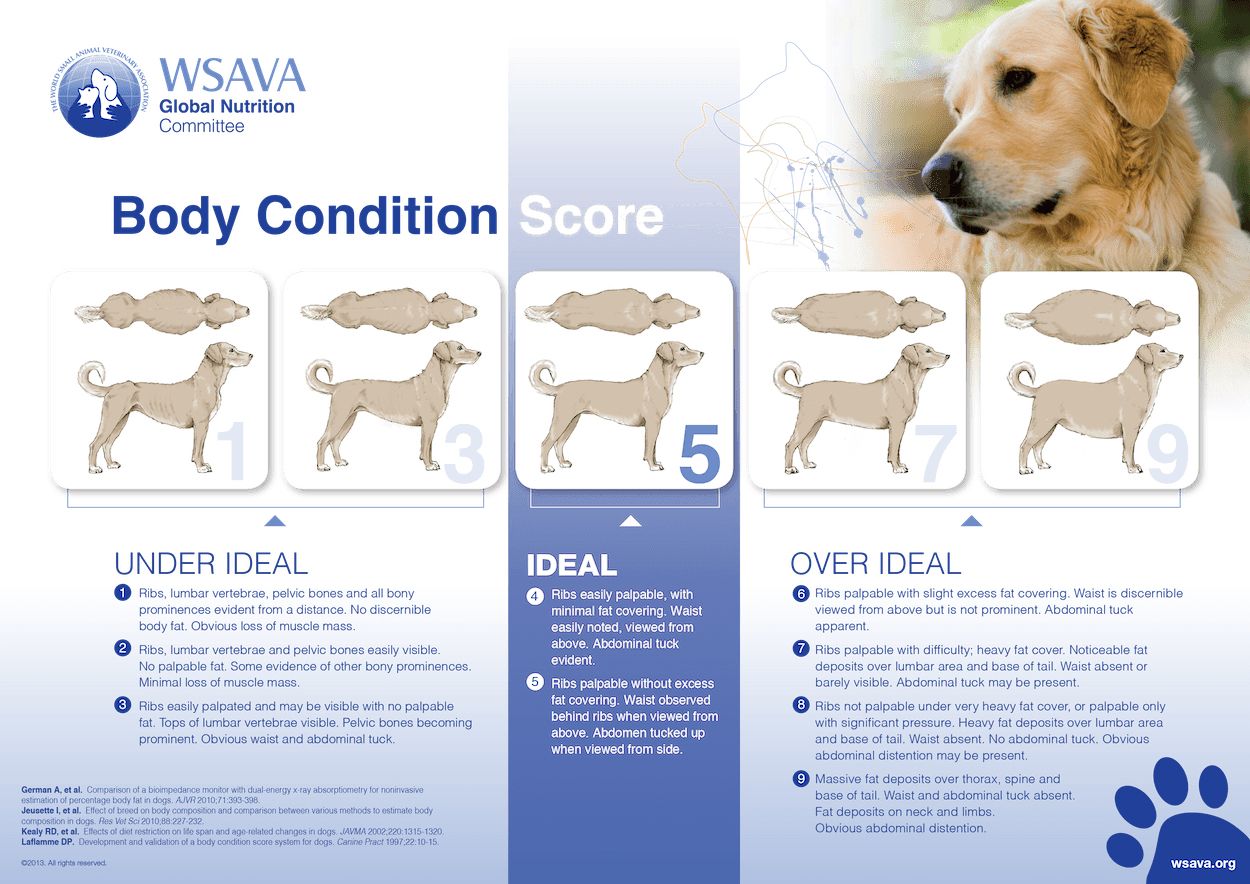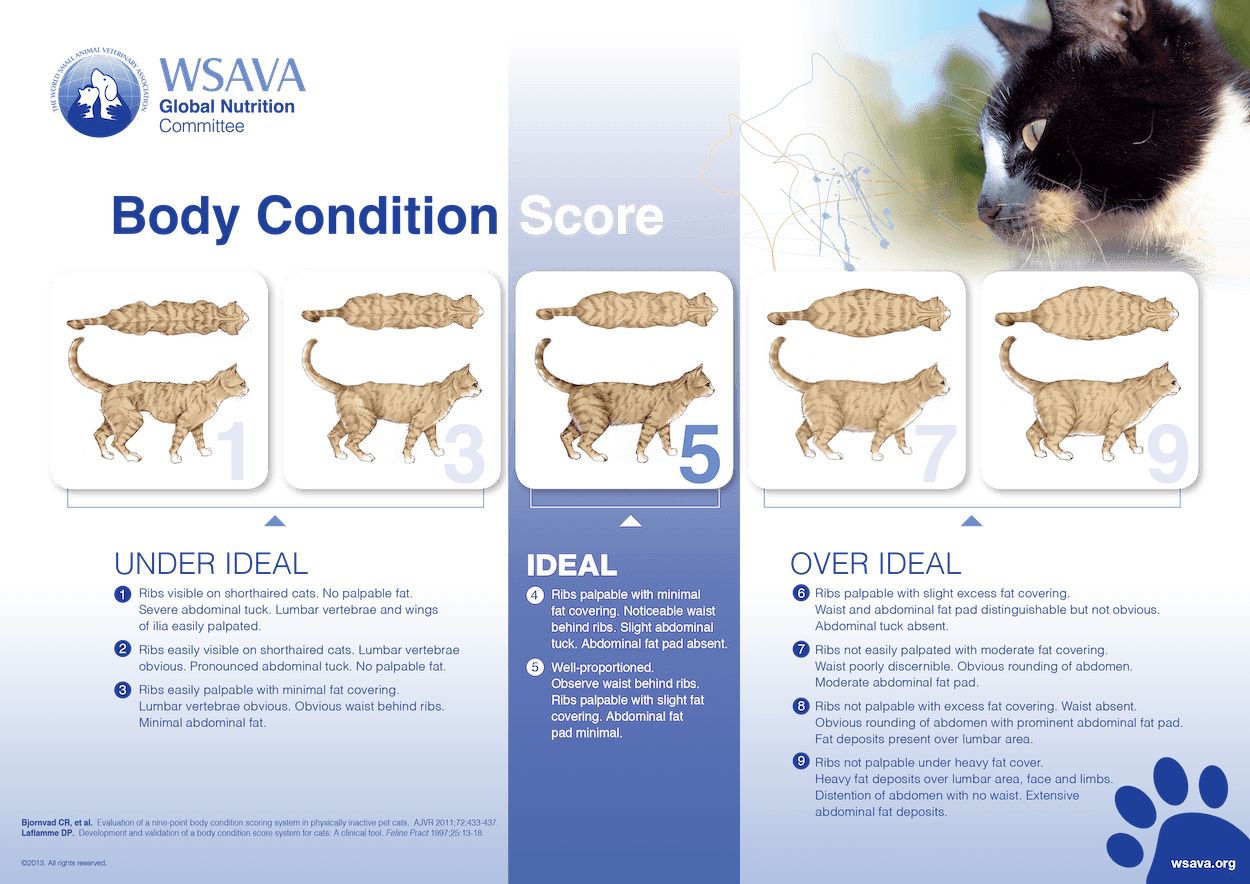2. Next, look at your dog or cat standing from the side. Their belly should be taught, tight, and trend upwards. If their belly is round or dips towards the ground, they are carrying too much abdominal fat.
3. Lastly, look down at your pet and you should notice an hourglass figure. If your furry loved one is more on the round side, he or she needs to lose weight.
Check out this website to learn more about BCS: The Ohio State University Veterinary Medical Center.
Even if it is an extra 5 minutes of walking, throwing a ball, or chasing a mouse on a stick, any form of exercise even in short durations initially will help. You can even have your dog chase a ball or your cat chase a red laser pointer while you are watching TV! We recommend gradually increasing their activity weekly. Aim for 30 minutes of activity a day to help them burn calories and get more fit.
You can put their food in a food puzzle toy. These toys will not only help your pet eat slower, many of these toys will also force them to move the toy around to get their food. This will help them get moving and will also engage them mentally and keep them busy. Just make sure that you have an appropriately sized toy that they can’t swallow.
2. Cut down on the human (and pet) treats! Did you know that 1 oz cube of cheese is equivalent to 1 and 1/2 cheeseburgers in a dog and 2 and 1/2 cheeseburgers in a cat? Yowza! We understand that food is love and it is hard to say ‘no’ to their sweet face but take a look at this website to learn more about what human foods do to pets.
3. Feed them the correct amount of calories per day. Since every pet is different, we recommend you work with a doctor to figure out the appropriate calories to feed. A good starting point, however, is to use this formula:
Divide your pet’s weight by 2.2. Multiply this figure times 30. Add 70 and you’ve got a general idea of how many calories you should be feeding a typical inactive, indoor spayed or neutered dog or cat. For example, a 10 pound dog or cat can eat [10lbs / 2.2) x 30] = 206 k/calories per day. It is imperative to note that each pet’s metabolism is different so be sure to consult your veterinarian before starting a diet.
About The Author
Learn more about Dr. Rellinger on the “Meet Our Doctors” page.



